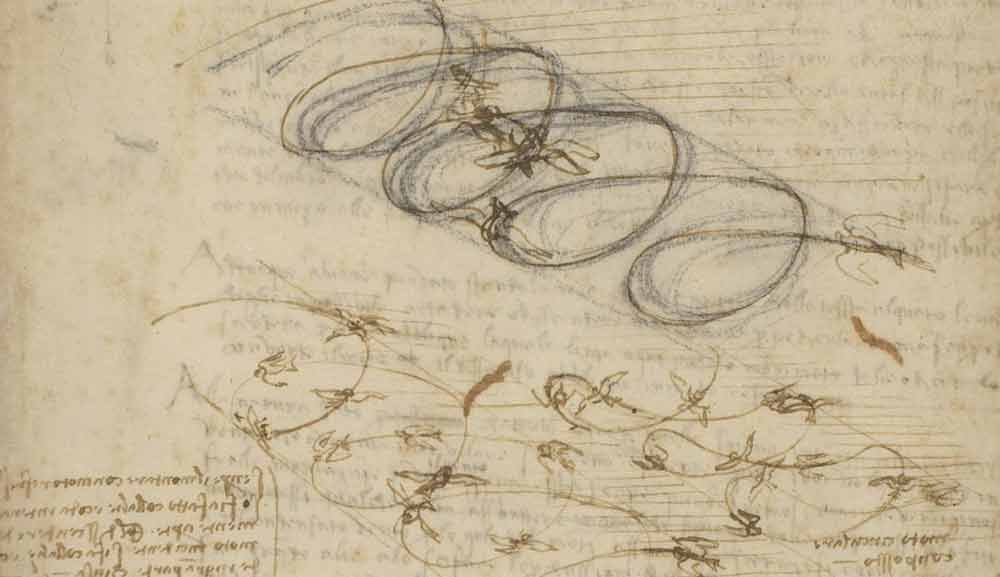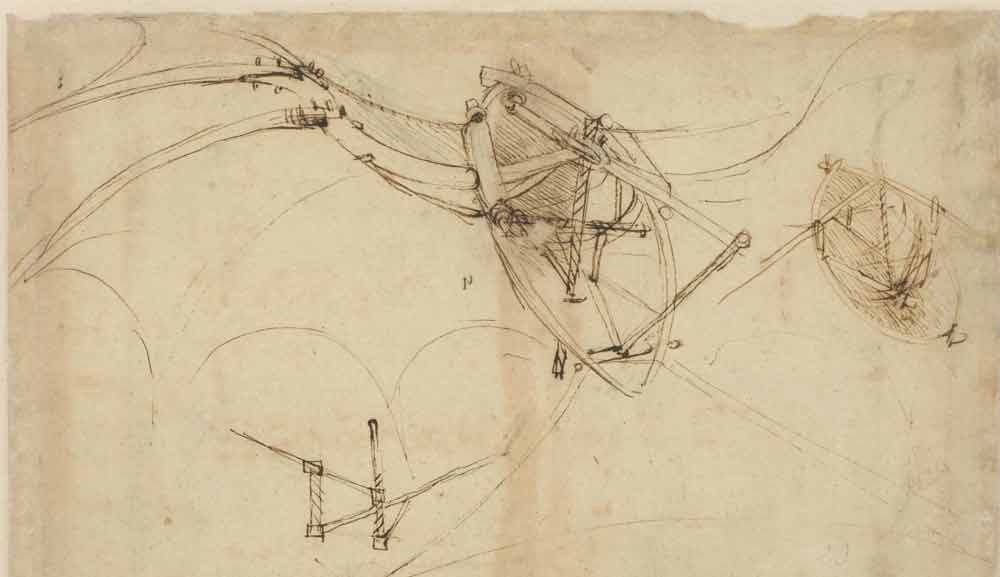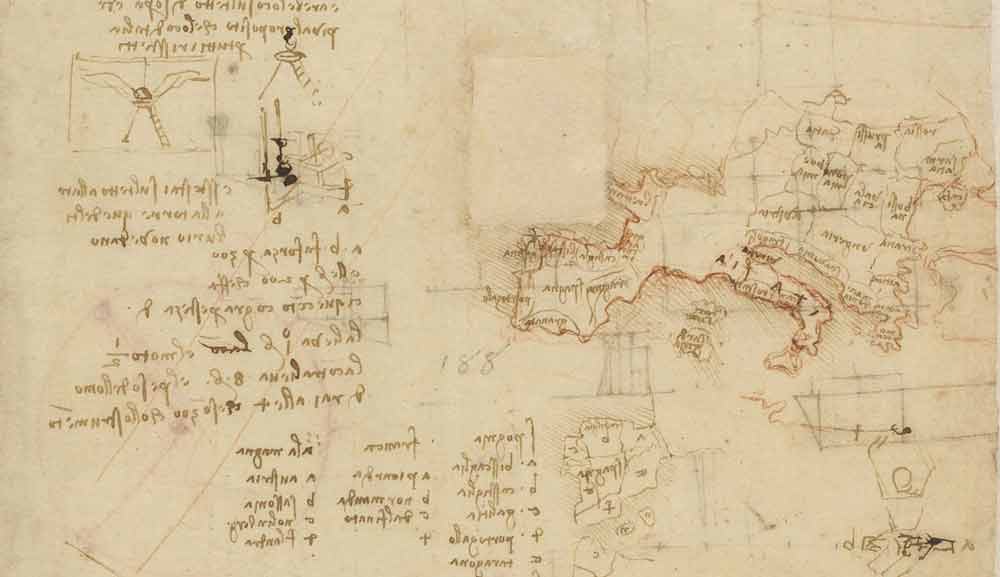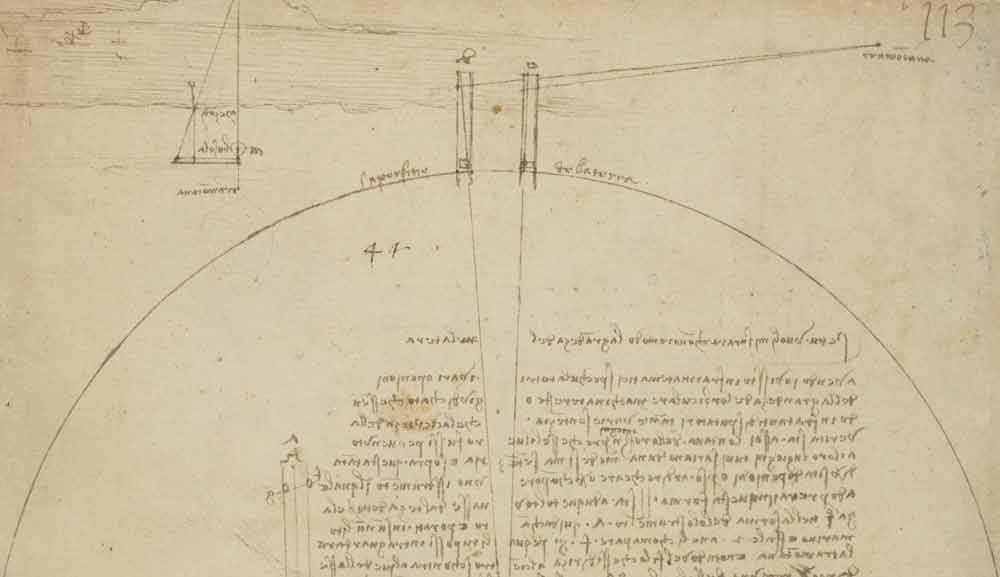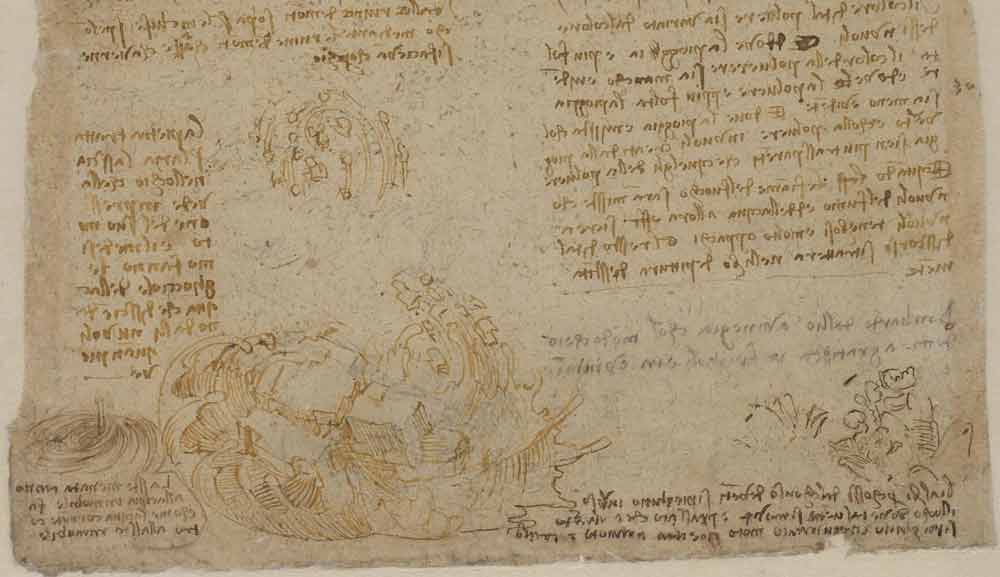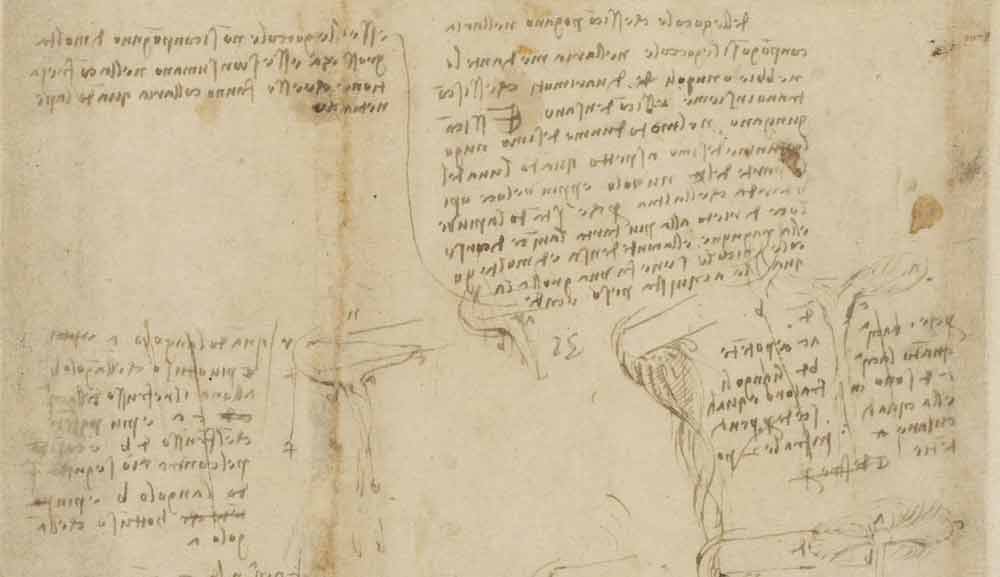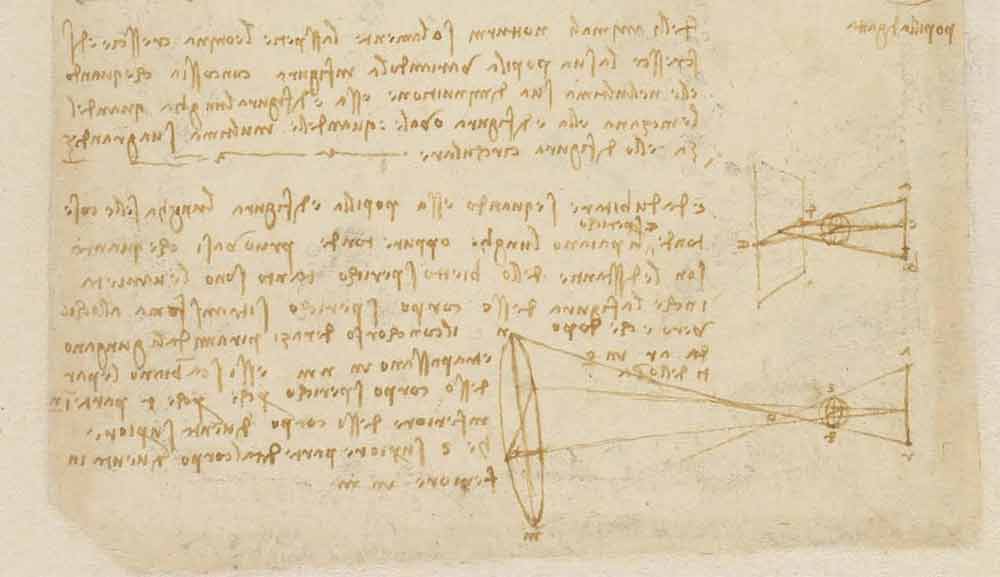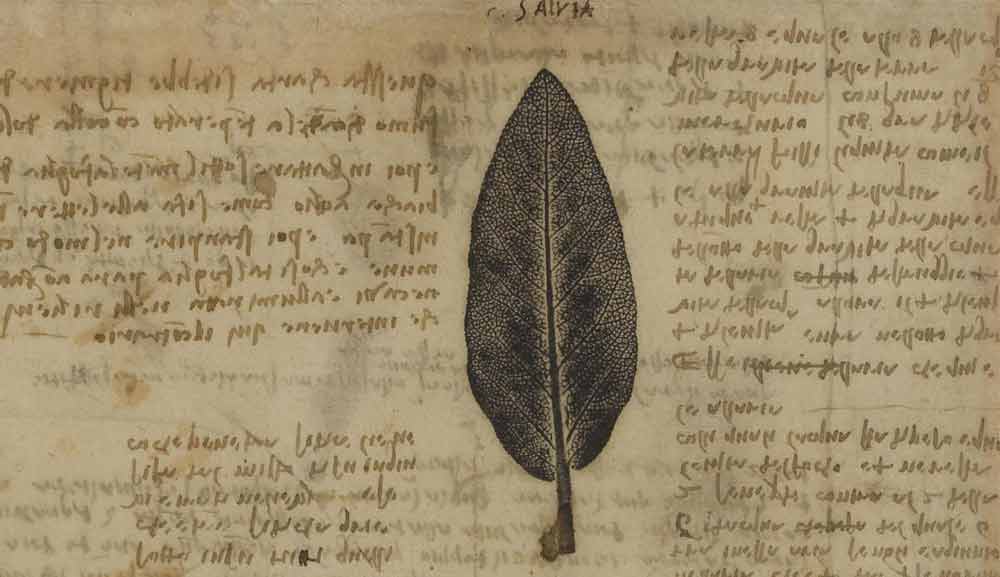In Da Vinci: Shaping the Future, Natural Sciences is the second section of the exhibition, and is investigated through facsimiles of pages of the Codex Atlanticus, interactive exhibits, models, design and hands-on education activities.
Leonardo da Vinci had a deep respect for nature and was fascinated by its components on both a macro and micro level. He studied the movements of water and air, the geological forms of the earth, and its botanical diversity. On a smaller scale, his main focus was on the human body: its beauty and its proportions, the mechanics of its movements, and how it compared to other animals in motion. While his contemporaries accepted the ancient view that the macro and micro were directly related, da Vinci – like a modern-day scientist – believed that only through careful observation could one obtain true knowledge. It was precisely this approach that led him to observe the natural world in the manner that he did, and then apply the knowledge derived from observation to practical problems.
The legacy of da Vinci’s investigation of the macro and micro elements of the natural world is presented in this section, in an installation by the artist Luke Jerram, who uses glass to visualise the molecular structures of microbiological life, including viruses and bacteria.
Leonardo da Vinci had a deep respect for nature and was fascinated by its components on both a macro and micro level. He studied the movements of water and air, the geological forms of the earth, and its botanical diversity. On a smaller scale, his main focus was on the human body: its beauty and its proportions, the mechanics of its movements, and how it compared to other animals in motion. While his contemporaries accepted the ancient view that the macro and micro were directly related, da Vinci – like a modern-day scientist – believed that only through careful observation could one obtain true knowledge. It was precisely this approach that led him to observe the natural world in the manner that he did, and then apply the knowledge derived from observation to practical problems.
The legacy of da Vinci’s investigation of the macro and micro elements of the natural world is presented in this section, in an installation by the artist Luke Jerram, who uses glass to visualise the molecular structures of microbiological life, including viruses and bacteria.
- NATURAL SCIENCE
- NATURAL SCIENCE IMAGE GALLERY
- VIDEO
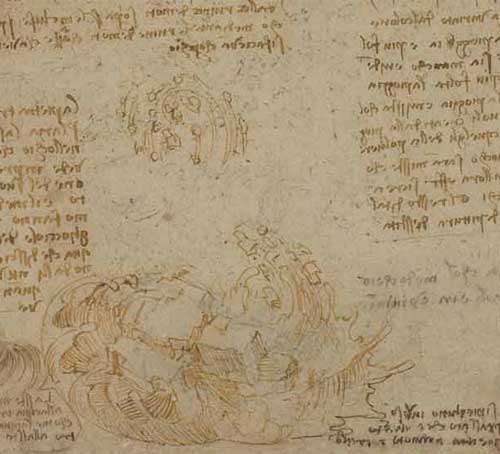
Properties of Water
Da Vinci studied water more than any other element as can be seen from the folios in the Codex Atlanticus. He considered water to be the main force of movement and change in the natural world, calling it the “mover of nature”. Heavily influenced by ancient philosophers, da Vinci had first approached the earth as a living being and compared the flow of water to the human circulatory system.
However, as he investigated the properties of water in various forms, such as raindrops, rivers, tears and blood, and observed its dynamic behaviours, he revised his approach to the natural world. Da Vinci slowly realised flaws in the ancient approach and began to rely on his own scientific observations for understanding. Eventually, he would use his understanding of water’s properties to develop hydraulic tools that harnessed the power of water, transforming the sometimes destructive nature of water into a power which could benefit man.
However, as he investigated the properties of water in various forms, such as raindrops, rivers, tears and blood, and observed its dynamic behaviours, he revised his approach to the natural world. Da Vinci slowly realised flaws in the ancient approach and began to rely on his own scientific observations for understanding. Eventually, he would use his understanding of water’s properties to develop hydraulic tools that harnessed the power of water, transforming the sometimes destructive nature of water into a power which could benefit man.
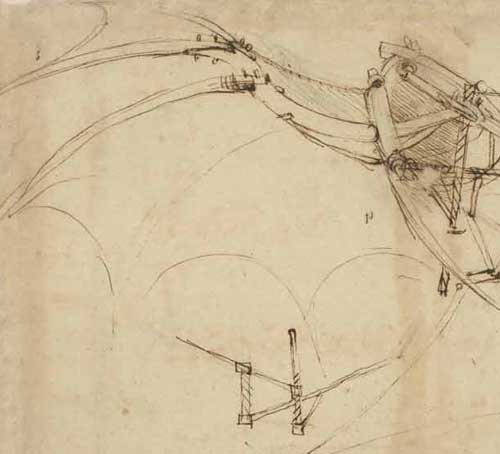
Natural and Mechanical Flight
Da Vinci’s study of mechanical flight developed significantly during the course of his career. His first studies date to his youth at the workshop of Verrocchio, where he was introduced to the stage machinery of festivals and sacred representations. These inspired him to use the same machinery to create theatrical flying devices. When da Vinci moved to Milan, he investigated how the wings of a flying machine could be powered by the human body.
Around 1500, he became particularly interested in the form and function of birds, and this influenced the design of his flight machines. He studied the anatomical structure of the wing, its proportion to the rest of the body, and how the wing moved differently in various wind conditions.
While da Vinci still considered artificial flight in terms of flapping wings and gliding, his designs became increasingly similar to a natural wing. His continuous observation of the natural world was crucial to his development of flight machines and made him out as being centuries ahead of his time.
Around 1500, he became particularly interested in the form and function of birds, and this influenced the design of his flight machines. He studied the anatomical structure of the wing, its proportion to the rest of the body, and how the wing moved differently in various wind conditions.
While da Vinci still considered artificial flight in terms of flapping wings and gliding, his designs became increasingly similar to a natural wing. His continuous observation of the natural world was crucial to his development of flight machines and made him out as being centuries ahead of his time.
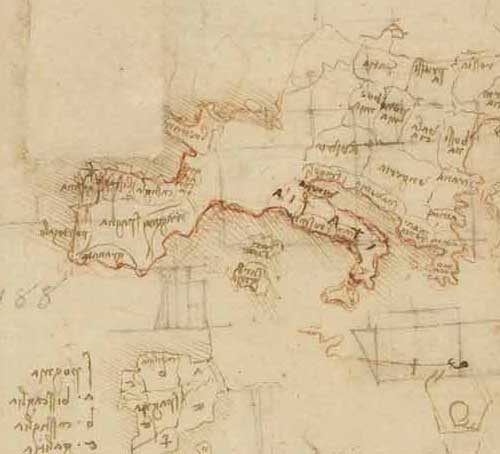
Geography
The study of “earth science” during the Renaissance involved many research fields, including the study of the earth’s origin, the investigation of its physiological properties, and the laws of the natural elements. Da Vinci’s studies of earth science looked at how the earth could benefit humankind. He focused on elaborate measurements, observations, and documentation of geographic features using tools of his own design, which he would later adapt for various civic engineering and military projects.
Da Vinci’s map-making techniques surpassed anything attempted by medieval or Renaissance cartographers. As a result, his maps look surprisingly modern, and many of them are accurate to this day. He used colour and shading to indicate elevations, similar to what is done in modern atlases, and drew aerial views of detailed landscapes. As a result, da Vinci’s geographical studies often give viewers the feeling that they are looking at the landscape as if from an airplane.
Da Vinci’s map-making techniques surpassed anything attempted by medieval or Renaissance cartographers. As a result, his maps look surprisingly modern, and many of them are accurate to this day. He used colour and shading to indicate elevations, similar to what is done in modern atlases, and drew aerial views of detailed landscapes. As a result, da Vinci’s geographical studies often give viewers the feeling that they are looking at the landscape as if from an airplane.
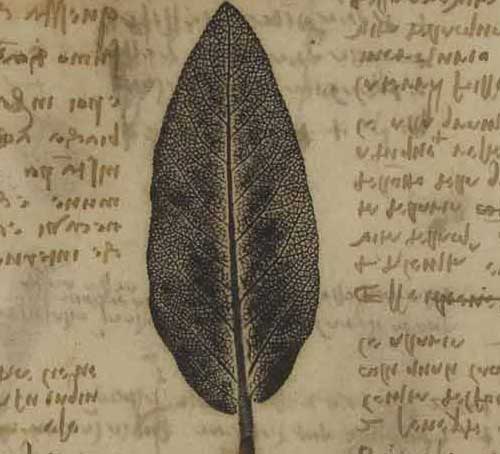
Botanical Studies
Da Vinci studied plants and flowers, already widely present in his early pictorial works, with the accuracy of a botanist. He represented plants within their proper habitats and with seasonal accuracy. He studied the form and structure of plants, detected their age, observed their movements toward the sun, and theorised about the geometric laws governing the development of branches.
Specifically in the Codex Atlanticus, da Vinci depicted rare plants and flowers and described applications of botanical studies, such as their therapeutic properties and how they could be used to create various colours for painting. In all his botanical studies, he approached natural phenomena from a dual perspective: one strictly scientific and one linked to painting. Yet, the problem of shadows, lights and how to depict landscapes was a recurring theme in da Vinci’s work, reflecting his belief that science and art could not be viewed in isolation.
Specifically in the Codex Atlanticus, da Vinci depicted rare plants and flowers and described applications of botanical studies, such as their therapeutic properties and how they could be used to create various colours for painting. In all his botanical studies, he approached natural phenomena from a dual perspective: one strictly scientific and one linked to painting. Yet, the problem of shadows, lights and how to depict landscapes was a recurring theme in da Vinci’s work, reflecting his belief that science and art could not be viewed in isolation.

Human Figures
In his studies of the human body and the graphic representations of his findings, da Vinci was many generations ahead of his contemporaries. While his interest in human anatomy began as a way to more accurately represent the human body in his paintings, da Vinci quickly ventured even further into the realm of science. Towards the end of the 1480s and again at the start of the 1500s, he pursued detailed anatomical studies, many of which involved dissecting cadavers at hospitals.
Da Vinci believed not only that the inner organs of a human were closely interconnected, but also that they had a direct cause and effect relationship to the external features of the body. This approach reflects his highly complex understanding of both the macro and micro aspects of human nature. In order to capture the features and movements of the human body in his paintings, he had to understand the purpose of every feature, and how each functioned. Da Vinci’s approach to the human body, as in all the disciplines of his study, was a holistic one.
Da Vinci believed not only that the inner organs of a human were closely interconnected, but also that they had a direct cause and effect relationship to the external features of the body. This approach reflects his highly complex understanding of both the macro and micro aspects of human nature. In order to capture the features and movements of the human body in his paintings, he had to understand the purpose of every feature, and how each functioned. Da Vinci’s approach to the human body, as in all the disciplines of his study, was a holistic one.

